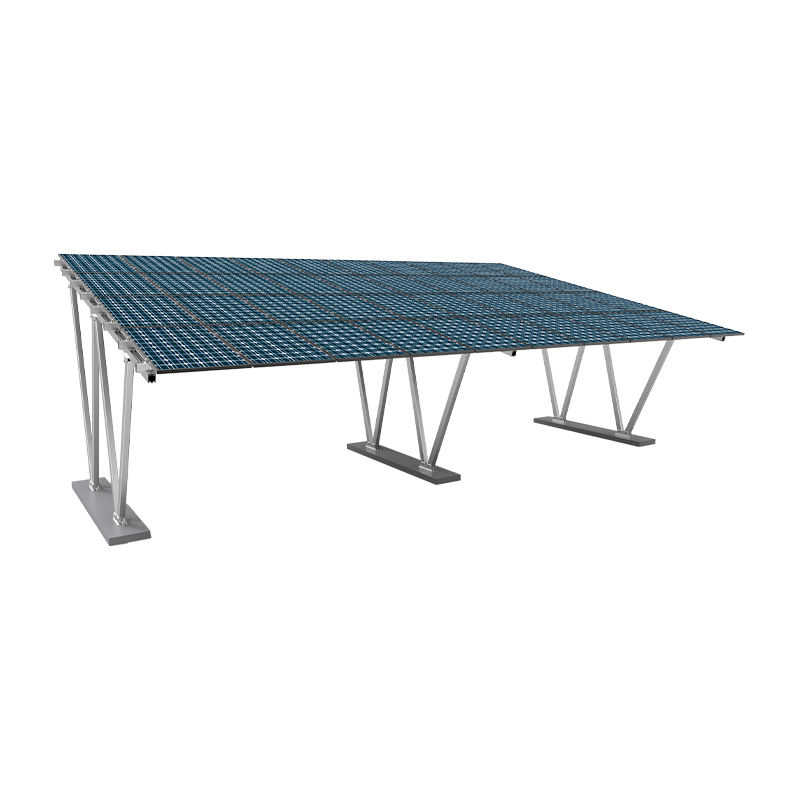
Are carport solar resistant to hail, rain, and UV exposure?
Introduction
Carport solar systems have become increasingly popular as a solution for combining vehicle protection with renewable energy generation. These systems, which include carport PV mounting systems and carport solar mounting systems, allow property owners to utilize open parking areas for solar energy production. One common concern for these installations is their ability to withstand environmental challenges such as hail, rain, and prolonged UV exposure.
Overview of Carport Solar Systems
Carport solar systems are designed to provide a dual function: sheltering vehicles while generating electricity through photovoltaic panels. The carport PV mounting system typically includes structural supports, cross beams, and mounting racks that hold solar panels securely in place. The carport solar mounting system ensures proper orientation and tilt to maximize energy production while maintaining stability against environmental forces. These systems are engineered to balance load-bearing capacity with the need to resist external stresses, making them an essential consideration for outdoor installations.
Resistance to Hail
Hail presents a significant risk to outdoor solar installations. Carport solar systems are generally designed with tempered glass panels that are tested to withstand impacts from hail of varying sizes. The carport PV mounting system contributes to hail resistance by providing a rigid support structure that distributes the impact force across multiple points, reducing the likelihood of damage to individual panels. Additionally, some carport solar mounting systems incorporate protective overhangs or reinforced frames to further minimize hail-related risks. While no structure is entirely immune to extremely large hail, the materials and design choices in carport solar systems enhance their ability to endure moderate hailstorms without significant performance loss.

Resistance to Rain and Moisture
Rain and moisture are constant environmental factors for any outdoor installation. Carport solar mounting systems are typically designed with drainage considerations, allowing water to flow off the panels and structural components without pooling. The carport PV mounting system often includes angled surfaces and secure fastenings that prevent water ingress at critical joints. High-quality coatings and corrosion-resistant materials, such as aluminum alloys and stainless steel fasteners, are used to maintain structural integrity despite prolonged exposure to rain. These features ensure that the carport solar system remains functional and that water does not compromise electrical connections or the stability of the mounting structure.
Resistance to UV Exposure
UV exposure can degrade materials over time, affecting both the solar panels and the mounting system. Carport solar systems are generally designed to resist UV-induced damage through the use of UV-stabilized coatings and materials that maintain their properties under prolonged sunlight exposure. The carport solar mounting system often incorporates polymers or protective finishes that prevent cracking, discoloration, and loss of strength due to UV radiation. Solar panels themselves are manufactured with encapsulants and surface coatings that reduce the impact of UV on photovoltaic cells, helping to maintain energy efficiency over the lifetime of the system. The combination of protective measures for both structural and photovoltaic components ensures long-term resistance to UV degradation.
Structural Design Considerations
The resistance of carport solar systems to hail, rain, and UV exposure is also influenced by structural design. The carport PV mounting system is engineered to provide stability under various loads, including wind, snow, and thermal expansion. The spacing of support columns, the strength of cross beams, and the anchoring methods are all critical factors that enhance the system’s resilience. The carport solar mounting system integrates these design elements with the orientation and tilt of solar panels, balancing energy production with environmental resistance. Proper engineering ensures that the system can withstand multiple stressors simultaneously without compromising safety or performance.
Maintenance and Longevity
Regular maintenance can enhance the resistance of carport solar systems to environmental stress. Cleaning panels to remove debris and checking fasteners in the carport PV mounting system ensures that rainwater can drain properly and that the structure remains secure. Inspecting coatings and protective layers on the carport solar mounting system helps identify early signs of UV or water-related degradation. Routine maintenance extends the useful life of the system, reducing the likelihood of performance loss due to environmental factors. Proper installation combined with ongoing upkeep is essential for maximizing the durability and effectiveness of carport solar systems.
Comparative Table of Environmental Resistance
| Environmental Factor | Design Feature | Effect on Carport Solar System |
|---|---|---|
| Hail | Tempered glass panels, reinforced mounting frames, overhang protection | Reduces risk of panel cracking, distributes impact force |
| Rain | Angled mounting, drainage channels, corrosion-resistant materials | Prevents water accumulation, protects structural and electrical components |
| UV Exposure | UV-stabilized coatings, polymer finishes, encapsulated solar cells | Maintains structural integrity and panel efficiency over time |
| Wind and Snow | Strong supports, proper anchoring, optimized panel tilt | Enhances overall stability and reduces stress on mounting systems |



 English
English 日本語
日本語 Deutsch
Deutsch عربى
عربى 中文
中文



